A BIRTHDAY SALUTE to one of comics’ greatest…
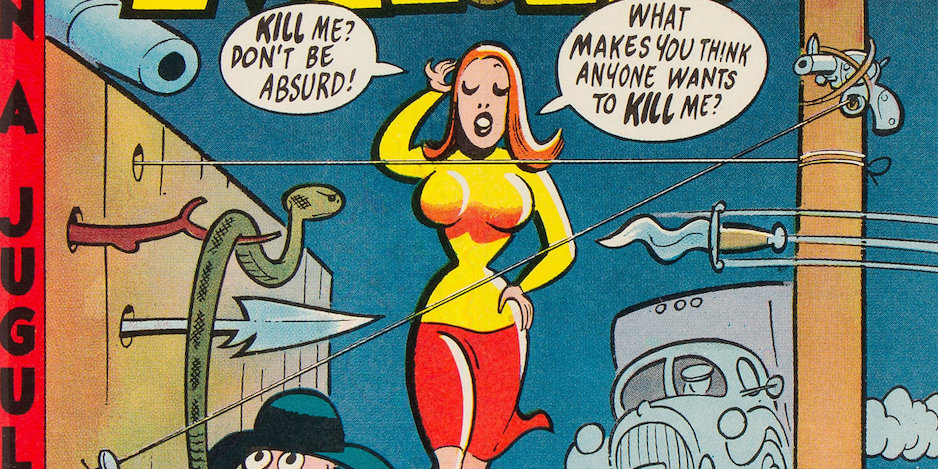
By PAUL KUPPERBERG
Comedy has many mothers, but for my sense of humor there was only one funny father: Harvey Kurtzman (October 3, 1924 – February 21, 1993).
I don’t know what that means either, but it doesn’t matter. It’s funny. Like Harvey Kurtzman. Growing up, my taste ran toward the over-the-top, absurdist humor of the Three Stooges, the Marx Brothers, Jerry Lewis, and the 1940s Warner Bros. cartoons. I was attracted to subversive comedy, although I didn’t know that’s what it was called. I just knew it was the stuff that made grown-ups make that disapproval-face.
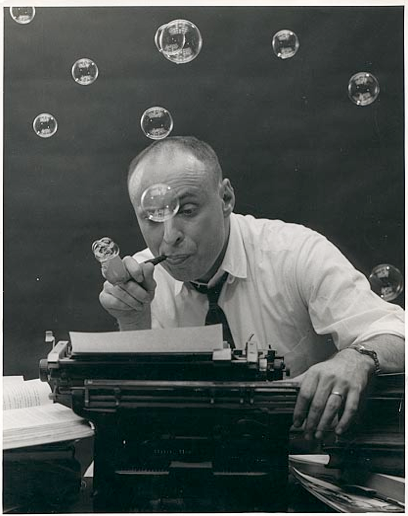
My tastes were formed in the 1960s, when American society and humor was struggling to break free of 1950s conformity and conventionality. One of the most accessible sources of subversive thought for kids was Mad Magazine. Then edited by Al Feldstein, Mad could be counted on to make fun of everything, from the advertising that tried selling every box of soap as a miracle product to the politicians who tried selling soap as the truth. “Trust nothing!” Mad Magazine told its young readers, “And don’t forget to laugh at it!”
Equally important as the new issues of Mad, and even funnier, if possible, were the paperback reprints of the Mad comic book, the original 23 10¢ four-color issues published between 1952 and 1955. Originally published by Ballantine Books, the first five paperbacks (The MAD Reader, MAD Strikes Back, Inside MAD, Utterly MAD, and The Brothers MAD) contained comic book parodies of movies, television, radio, comic books, and society under the editorial and creative eye of the Brooklyn born Kurtzman, king of schmaltz humor.
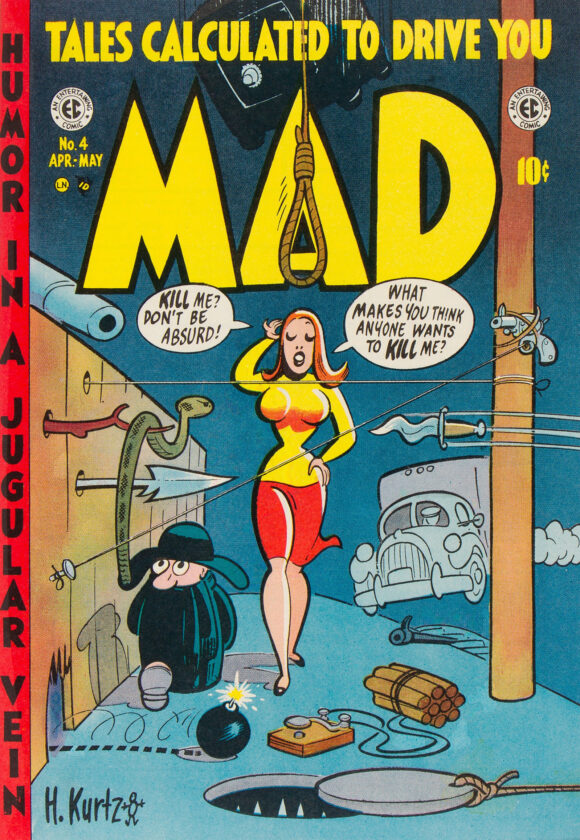
Kurtzman
Harvey Kurtzman was either (A) a master craftsman who knew precisely what he wanted, or (B) a total pain-in-the-ass control freak. But what difference does it make? He didn’t just script stories, he presented his artists like Will Elder, Wally Wood, Jack Davis, and John Severin with fully realized layouts already on the boards, often with the lettering already in place, but the results were some of the funniest comics ever created.
Harvey evidently also stood firm in what he wanted from in business and when he and publisher William Gaines couldn’t come to terms on the editor’s participation in the new magazine-size Mad, Kurtzman picked up his sense of humor and took it to a succession of elsewheres.
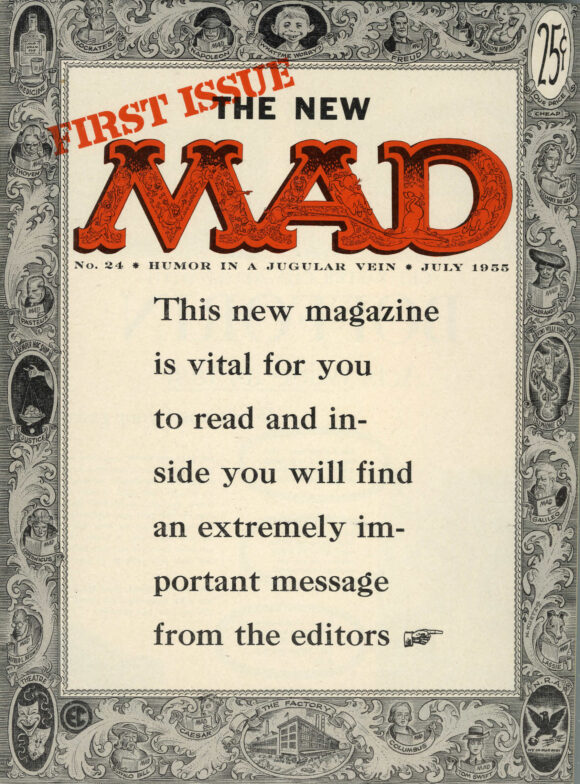
Frame by Kurtzman
I can’t honestly say how my sense of humor might have developed with Harvey Kurtzman. His influence was so great, I probably even owe him royalties on some of the schtick I swiped, uhm, that is to say borrowed, from his work when I began writing the movie parodies for Marvel’s Crazy Magazine. That “influence” peaked with my send-up of the Richard Gere film American Gigolo, “American Giggler” (art by Gary Hallgren), when I decided I needed to pull back before my continued attempts at homage tipped over into plagiarism.
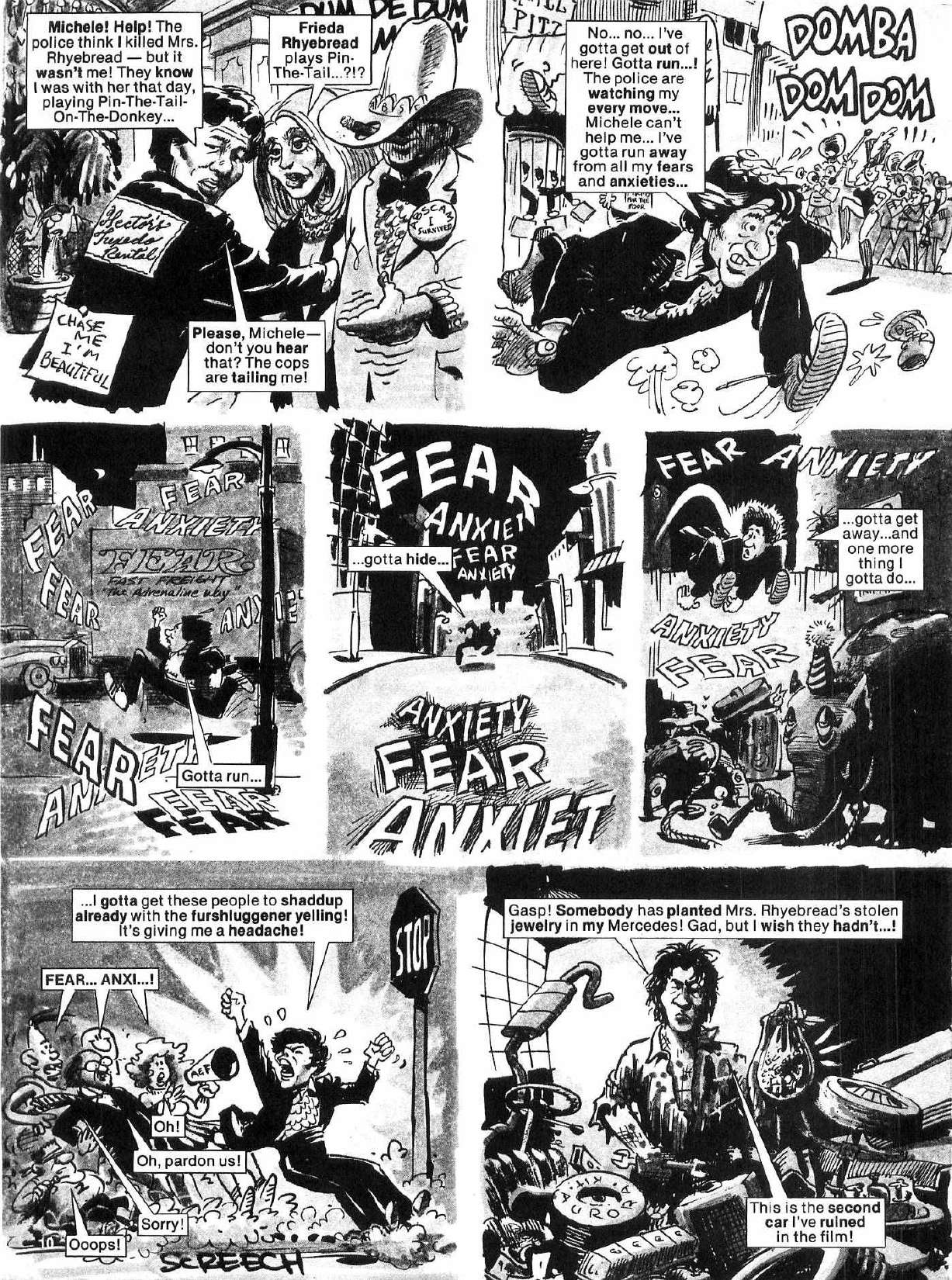
Just to add to the absurdity, I asked ChapGBT to come up with a brief introduction to Harvey Kurtzman. The results were mostly useless, except that it noted, “In his youth, Harvey dreamed of becoming a serious artist, but his doodles seemed to have a mind of their own,” and ended, “In the annals of humor history, Harvey Kurtzman stands tall, his wit towering over the landscape of comedy like a skyscraper made of rubber chickens. His legacy is a testament to the fact that sometimes, the funniest path in life is the one you stumble upon when you’re trying to be serious.”
Pretty perceptive for a robot… with a “rubber chicken” joke yet. Looks like Harvey’s even influencing the next generation of AH (artificial humor)! Potrzebie!
Here then, MY 13 FAVORITE BITS OF HARVEY KURTZMAN SCHTICK:
—
Hey, Look! With 150 episodes between 1946 – 1949 for Timely Comics, Kurtzman’s insane one-pagers stretched the boundaries of reality and ripped open the fourth wall.
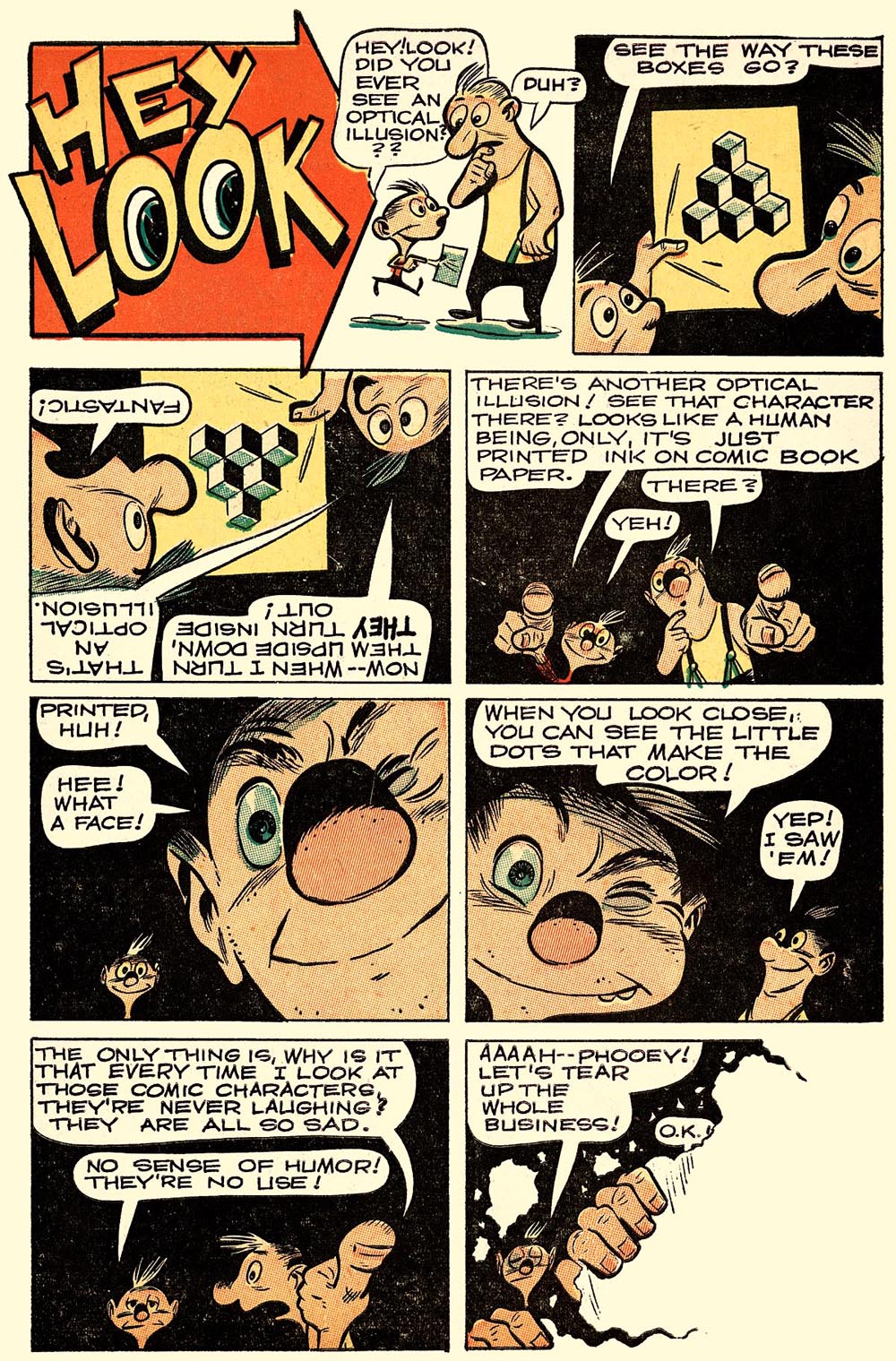
—
Pot Shot Pete (Toby Press, 1950). Pre-Mad craziness in the Old West.
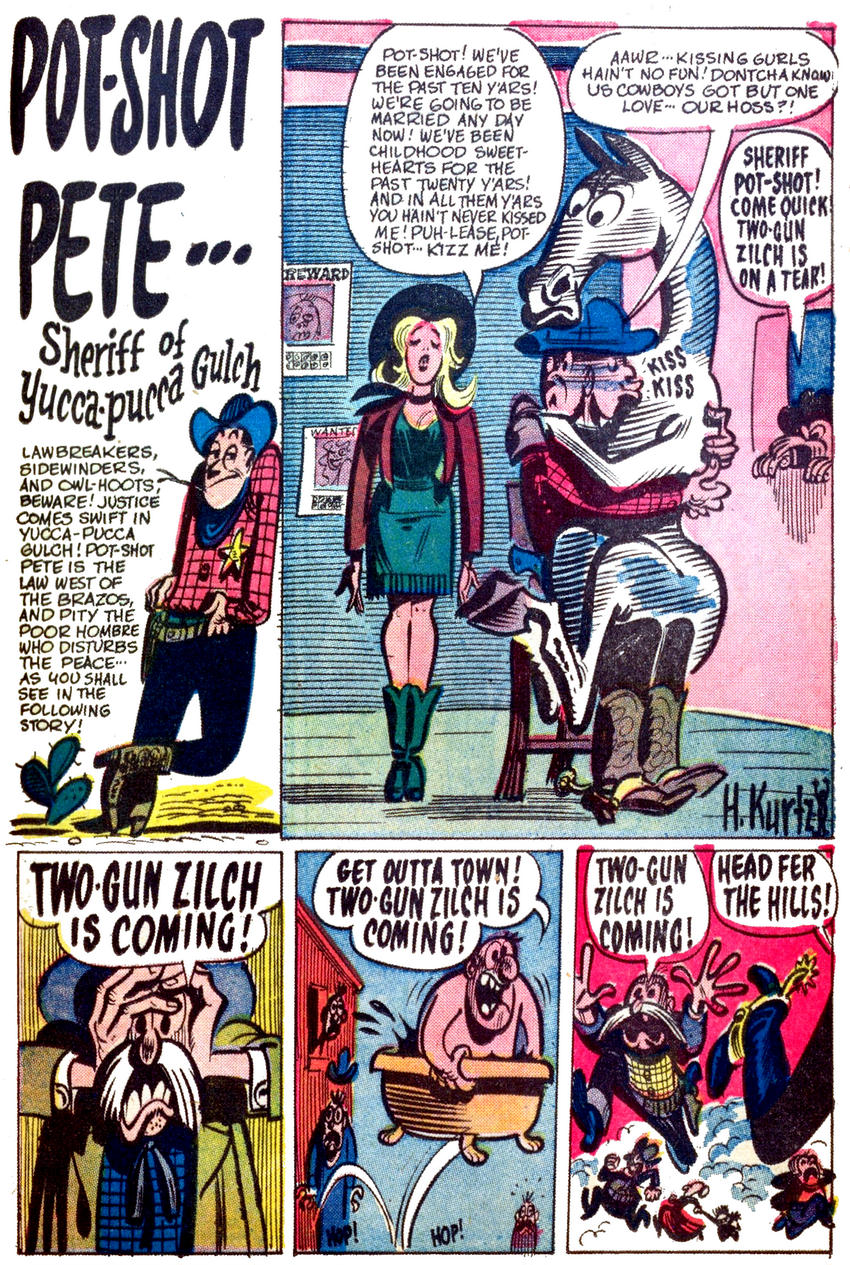
—
Two-Fisted Tales (1950 – 1955). War is hell, and Kurtzman’s stories didn’t hold back on the horrors of the battlefields of conflicts from across time. In Harvey Kurtzman: The Man Who Created Mad and Revolutionized American Humor by Bill Schelly, Kurtzman was quoted as saying, “I didn’t want to be a preacher, but I did want to tell the truth about things… I was absolutely appalled by the lies in the war books that publishers were putting out… This trash had nothing to do with the reality of life.”
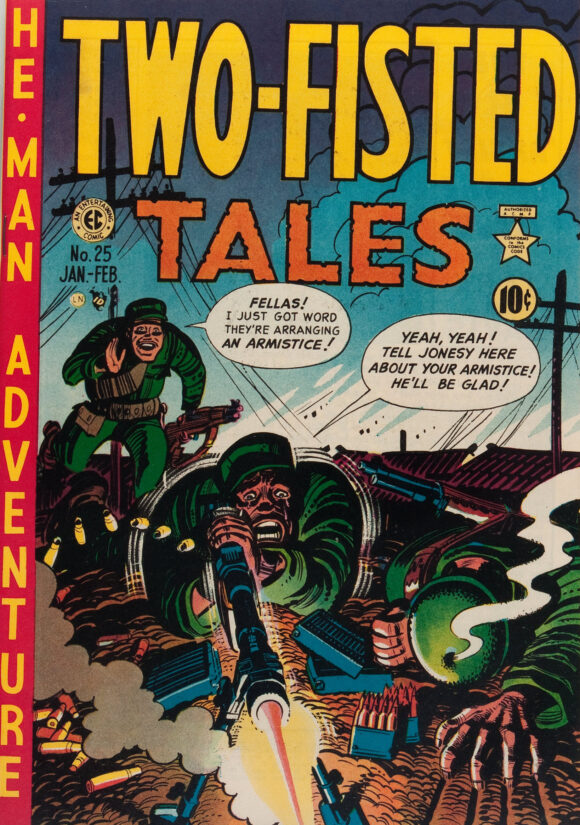
—
Frontline Combat (1951 – 1954). More war, in a varicose vein. No. Wait. That was Mad…
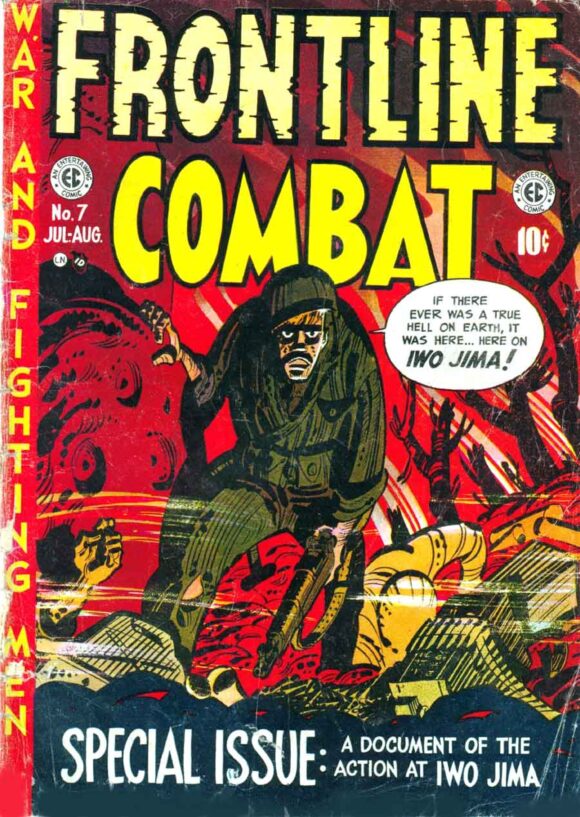
—
Mad Comics (1952 – 1955). Mad ground everything down to its essential elements, as Kurtzman and artist Will Elder did reality-testing of the anthropomorphic world of the Disney characters in “Mickey Rodent” from Mad #19 (January 1955).
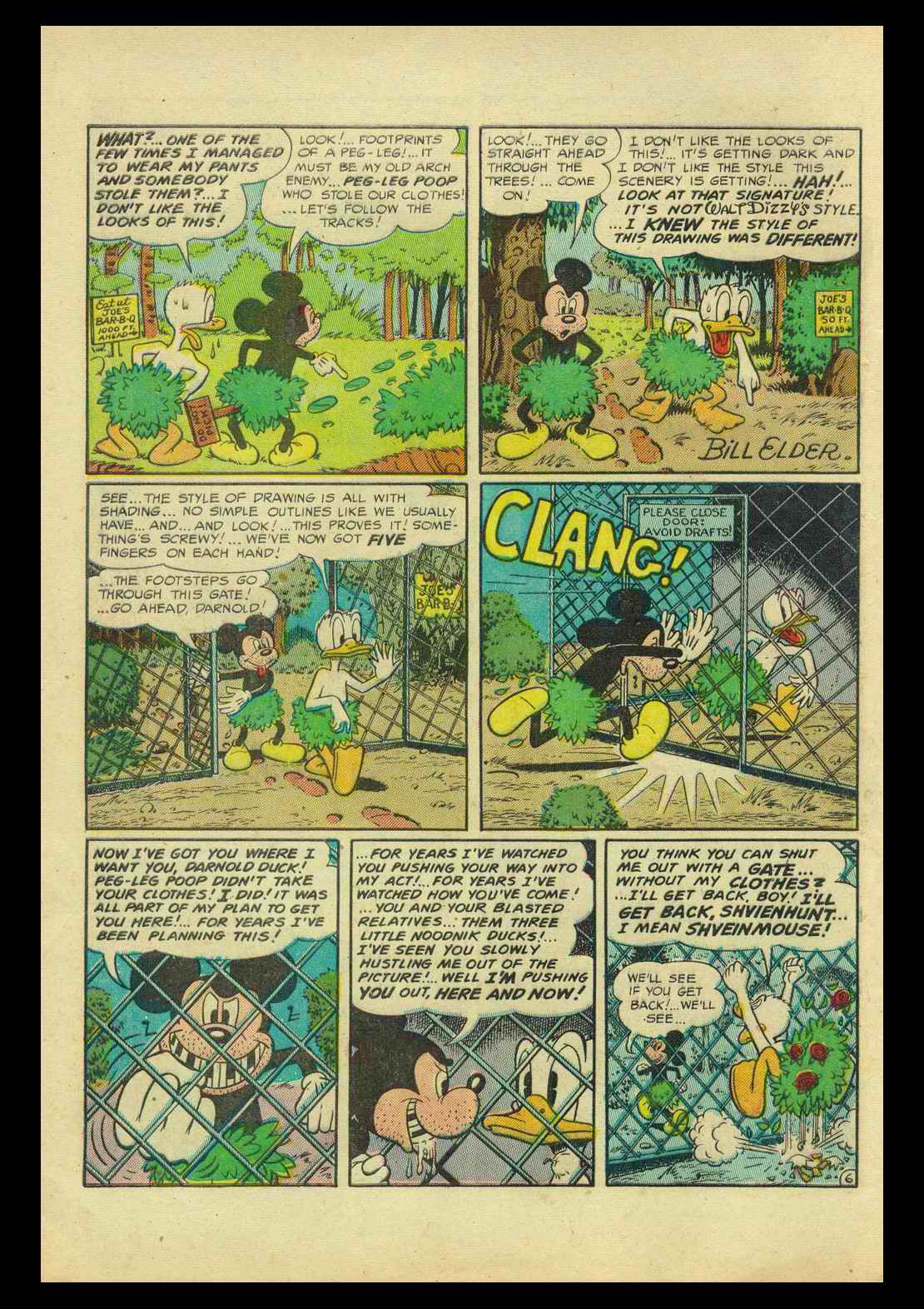
—
Trump (Playboy, 1957). After leaving Gaines and Mad in a huff, taking star artists Will Elder and Jack Davis with him, Kurtzman found a new publishing home with High Hefner, the man behind Playboy. The result was Trump, a glossy magazine with slick production values and a 50¢ price tag. Unfortunately, Trump debuted during a difficult time in Playboy’s finances and Hefner had to pull the plug after two issues. “I gave Harvey an unlimited budget, and he exceeded it,” Hef was quoted as saying in Schelly’s The Man Who Created Mad and Revolutionized American Humor.
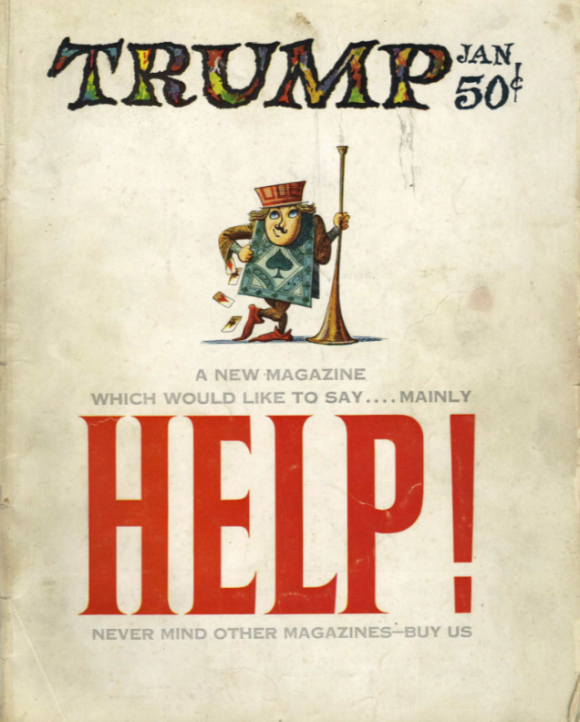
—
Harvey Kurtzman’s Jungle Book (Ballantine Books, 1959). Kurtzman grows up, shifting his satiric gaze from comics and kids’ stuff to grown-up concerns in Jungle Book, now skewering TV detectives, adult Westerns, and capitalism.
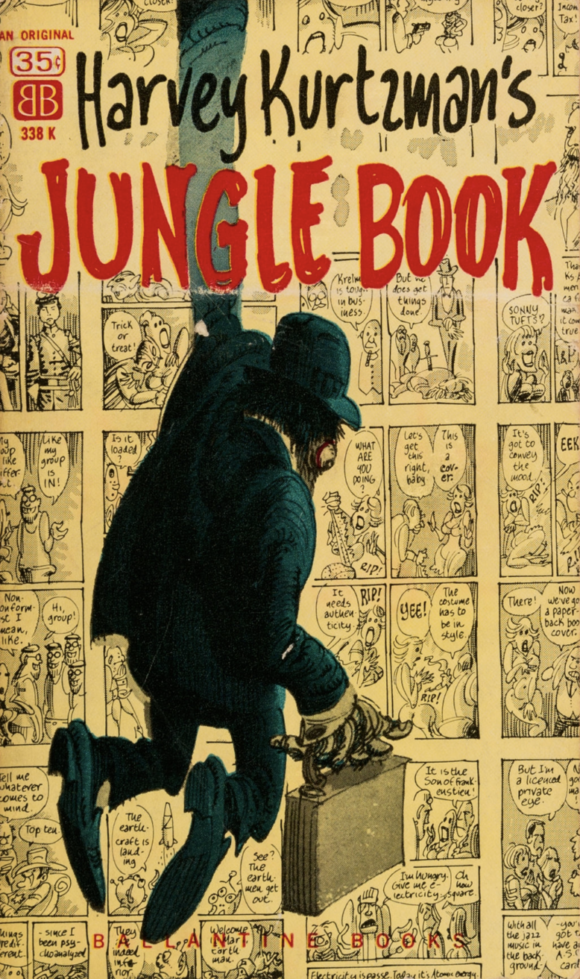
—
Goodman Beaver (1959 – 1962). Armed only with a wide-eyed sense of optimism and a naïveté, Kurtzman’s Goodman Beaver was the perfect vehicle for his satiric storytelling and parodic take on the world. The half dozen stories originally published in his Jungle Book and issues of Help! took on such targets as big business, “T*rz*n of the *pes,” and Playboy… but it was Archie Comics that gave Harvey and publisher Jim Warren a legal headache when they sued over depictions of the Archie characters.
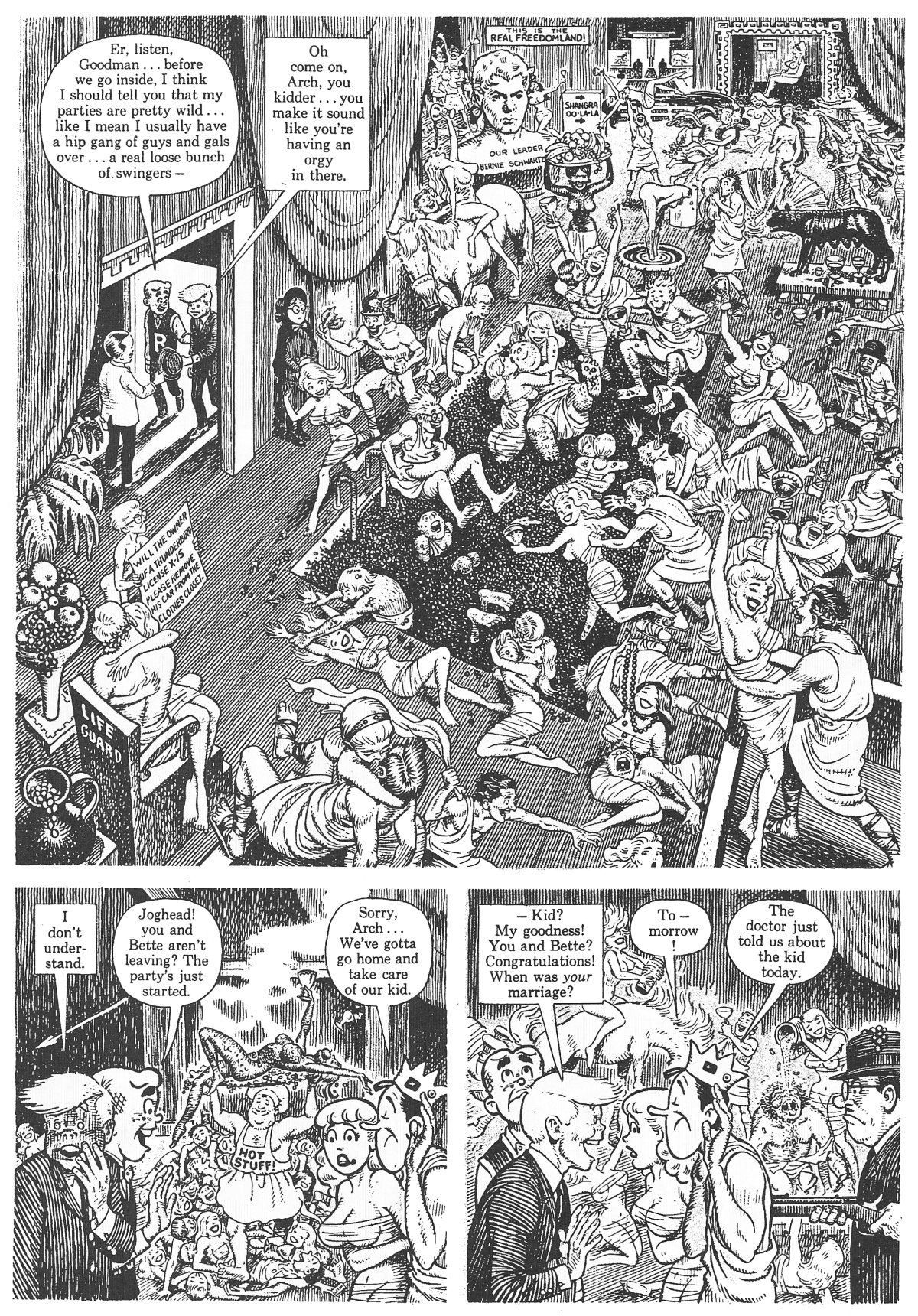
—
Humbug (1957). Disappointed by the cancellation of Trump, Kurtzman and fellow artists Al Jaffee, Arnold Roth, Will Elder, and Harry Chesler raised $6,500 of their own money to launch Humbug, a black-and-white satire magazine in comics format selling for 15¢. Humbug took on the usual Kurtzman parody targets, from TV and movies to pop culture and advertising, but it would only survive for 11 issues, the last two in a larger, magazine-size format.
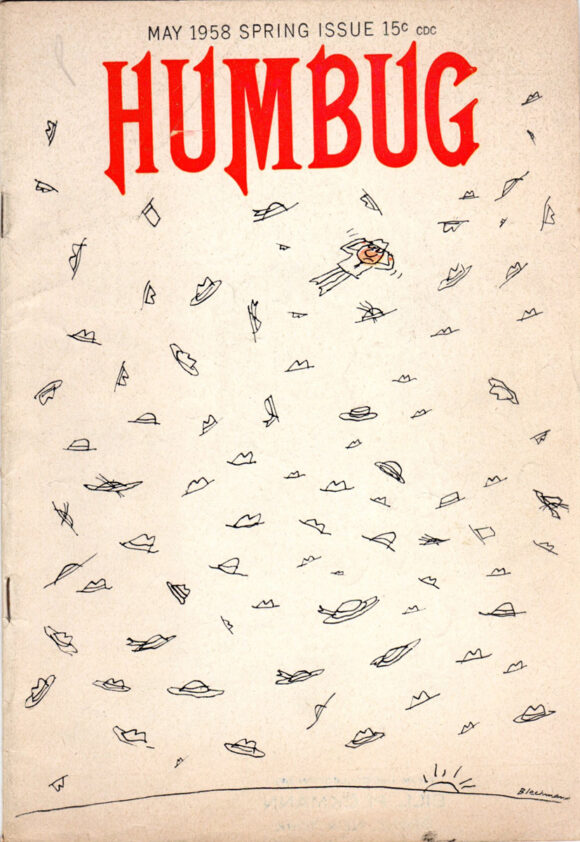
—
Help! (Warren Publishing, 1960 – 1965). The most successful of Kurtzman’s post-Mad satire magazines, Help! ran for 26 issues, published by James Warren before his Creepy and Eerie days. While Trump may have been produced on an “unlimited budget,” Help! was a shoestring operation that somehow managed to attract contributors including Jerry Lewis, Woody Allen, John Cleese, Will Elder, Al Jaffee, as well as celebrities of the time like Orson Bean and Milt Kamen. Among Kurtzman’s assistants on Help! were future Ms. Magazine founder Gloria Steinem and eventual Monty Python member Terry Gilliam.
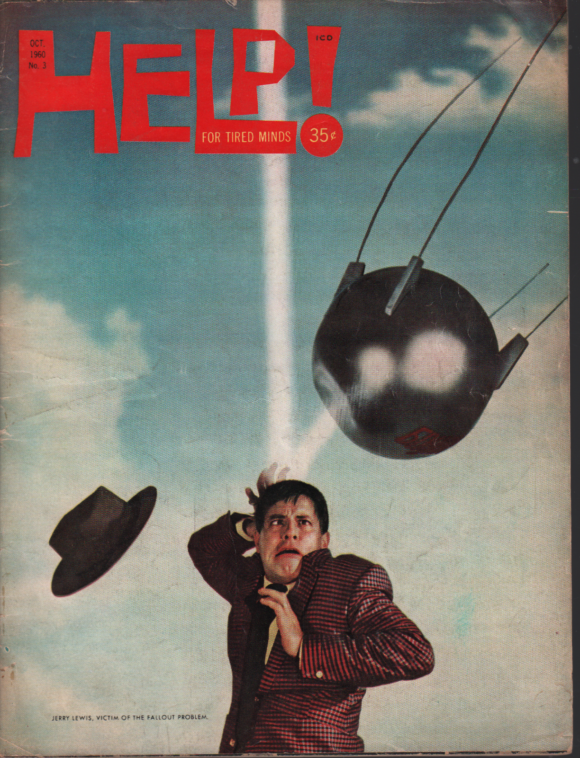
—
Little Annie Fanny (Playboy, 1962 – 1968). After Mad, Little Annie Fanny, the sexualized innocent, is probably the satirist’s most famous creation. Kurtzman wrote and roughly penciled the feature before handing it off to Elder and a coterie of artists to finish off. The satiric gloves came off in Little Annie Fanny and so did Annie’s top.
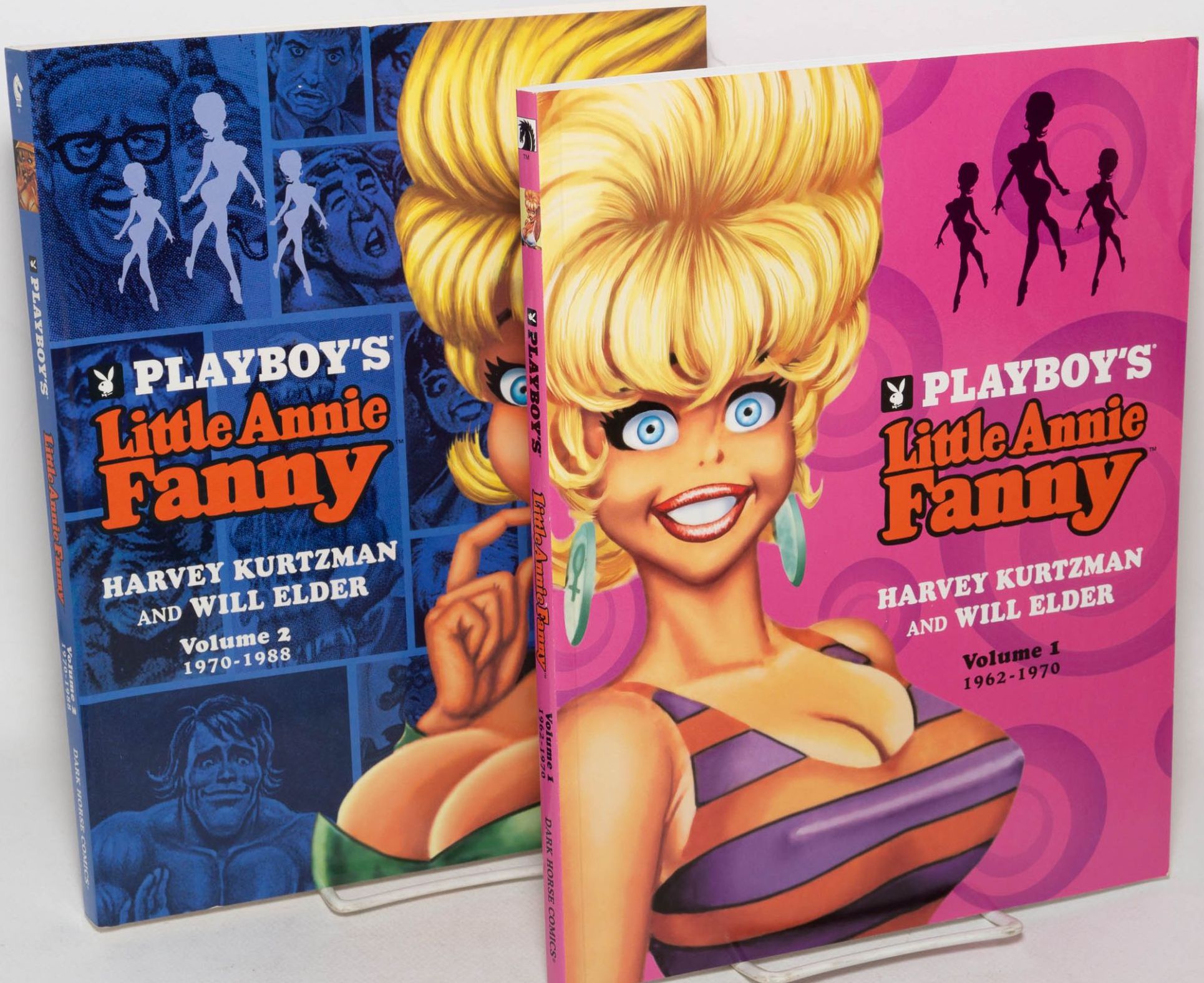
—
Mad Monster Party (Rankin/Bass, 1967). With a script co-written by Kurtzman (with Len Korobkin), character designs by Jack Davis, and voices by Boris Karloff and Phyllis Diller, this stop-action animated monster movie has become a cult classic.
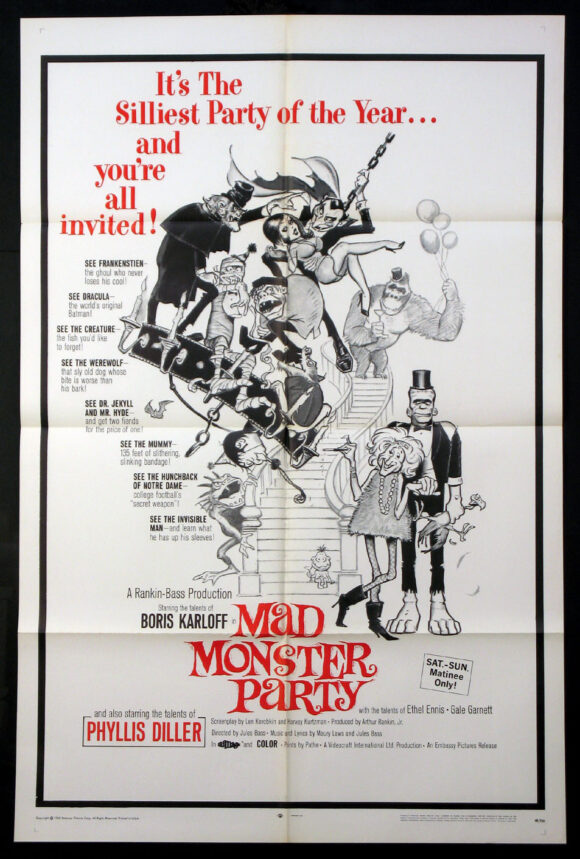
—
From Aargh! to Zap!: Harvey Kurtzman’s Visual History of the Comics (Prentice Hall Press, 1991). Co-written with Michael Barrier, the heavily illustrated From Aargh! to Zap! is more a survey of Harvey Kurtzman’s visual history than anything else, but it’s nonetheless a worthwhile read by a cartoonist who spent his life in the field.
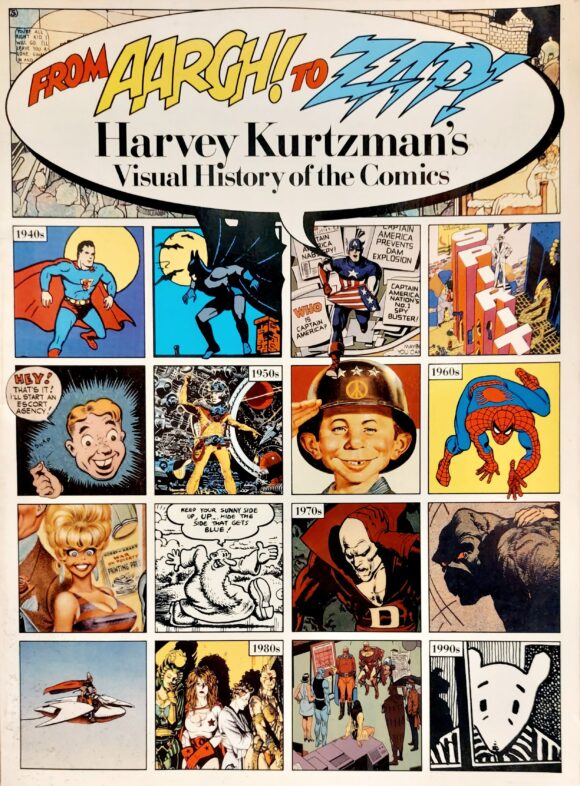
—
MORE
— 13 COVERS: A HARVEY KURTZMAN Birthday Celebration. Click here.
— The MAD-NESS of WILL ELDER in 13 Hilarious Pages. Click here.
—
PAUL KUPPERBERG was a Silver Age fan who grew up to become a Bronze Age comic book creator, writer of Superman, the Doom Patrol, and Green Lantern, creator of Arion Lord of Atlantis, Checkmate, and Takion, and slayer of Aquababy, Archie, and Vigilante. He is the Harvey and Eisner Award nominated writer of Archie Comics’ Life with Archie, and his YA novel Kevin was nominated for a GLAAD media award and won a Scribe Award from the IAMTW. Now, as a Post-Modern Age gray eminence, Paul spends a lot of time looking back in his columns for 13th Dimension and in books such as Direct Conversations: Talks with Fellow DC Comics Bronze Age Creators and Direct Comments: Comic Book Creators in Their own Words, available, along with a whole bunch of other books he’s written, by clicking the links below.
Website: https://www.paulkupperberg.net/
Shop: https://www.paulkupperberg.net/shop-1
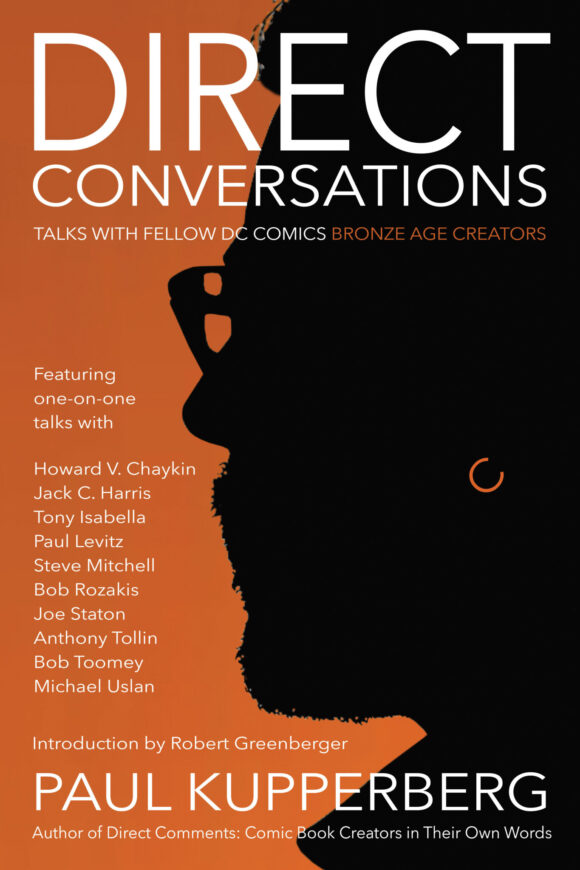

October 3, 2023
I never found Kurtzman’s work to be all that funny (I’m a Gen-Xer, for what it’s worth), but when he was drawing his own stories (as opposed to art directing others), his artwork was drop dead gorgeous. And Humbug (especially the remastered edition released by Fantagraphics a few years ago) is absolutely beautifully designed and illustrated.
October 5, 2023
I loved this overview of his work. I remember laughing so much at his parodies that I read in those little reprints that were inserted in special issues of MAD in the 70s and later on. Such a talent and he had great influence (like all the early MAD writers and artists) on the wits who have entertained my generation (gen-X)! Thank you!